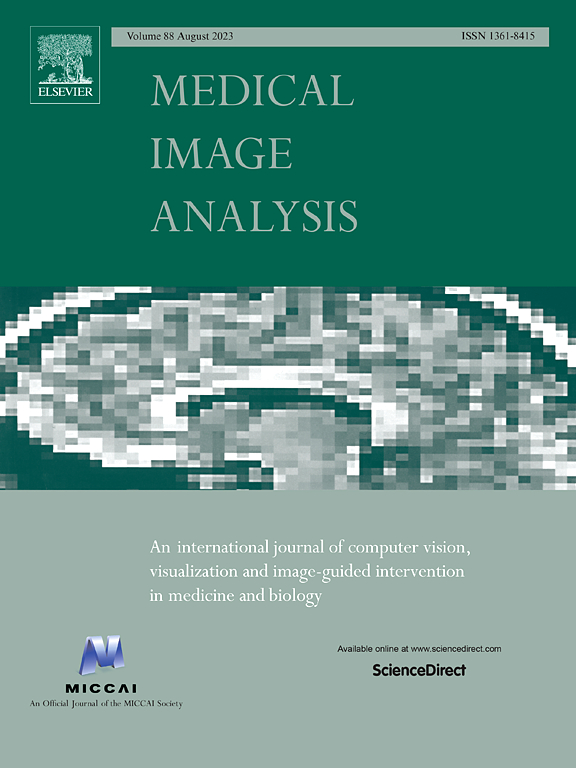SIRE: Scale-invariant, rotation-equivariant estimation of artery orientations using graph neural networks
IF 10.7
1区 医学
Q1 COMPUTER SCIENCE, ARTIFICIAL INTELLIGENCE
引用次数: 0
Abstract
The orientation of a blood vessel as visualized in 3D medical images is an important descriptor of its geometry that can be used for centerline extraction and subsequent segmentation, labeling, and visualization. Blood vessels appear at multiple scales and levels of tortuosity, and determining the exact orientation of a vessel is a challenging problem. Recent works have used 3D convolutional neural networks (CNNs) for this purpose, but CNNs are sensitive to variations in vessel size and orientation. We present SIRE: a scale-invariant rotation-equivariant estimator for local vessel orientation. SIRE is modular and has strongly generalizing properties due to symmetry preservations.
SIRE consists of a gauge equivariant mesh CNN (GEM-CNN) that operates in parallel on multiple nested spherical meshes with different sizes. The features on each mesh are a projection of image intensities within the corresponding sphere. These features are intrinsic to the sphere and, in combination with the gauge equivariant properties of GEM-CNN, lead to SO(3) rotation equivariance. Approximate scale invariance is achieved by weight sharing and use of a symmetric maximum aggregation function to combine predictions at multiple scales. Hence, SIRE can be trained with arbitrarily oriented vessels with varying radii to generalize to vessels with a wide range of calibres and tortuosity.
We demonstrate the efficacy of SIRE using three datasets containing vessels of varying scales; the vascular model repository (VMR), the ASOCA coronary artery set, and an in-house set of abdominal aortic aneurysms (AAAs). We embed SIRE in a centerline tracker which accurately tracks large calibre AAAs, regardless of the data SIRE is trained with. Moreover, a tracker can use SIRE to track small-calibre tortuous coronary arteries, even when trained only with large-calibre, non-tortuous AAAs. Additional experiments are performed to verify the rotational equivariant and scale invariant properties of SIRE.
In conclusion, by incorporating SO(3) and scale symmetries, SIRE can be used to determine orientations of vessels outside of the training domain, offering a robust and data-efficient solution to geometric analysis of blood vessels in 3D medical images.

求助全文
约1分钟内获得全文
求助全文
来源期刊

Medical image analysis
工程技术-工程:生物医学
CiteScore
22.10
自引率
6.40%
发文量
309
审稿时长
6.6 months
期刊介绍:
Medical Image Analysis serves as a platform for sharing new research findings in the realm of medical and biological image analysis, with a focus on applications of computer vision, virtual reality, and robotics to biomedical imaging challenges. The journal prioritizes the publication of high-quality, original papers contributing to the fundamental science of processing, analyzing, and utilizing medical and biological images. It welcomes approaches utilizing biomedical image datasets across all spatial scales, from molecular/cellular imaging to tissue/organ imaging.
 求助内容:
求助内容: 应助结果提醒方式:
应助结果提醒方式:


